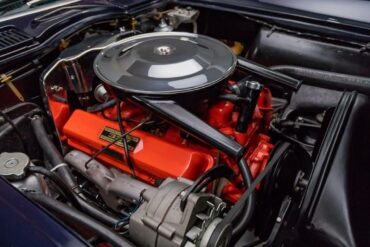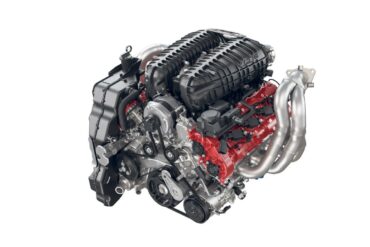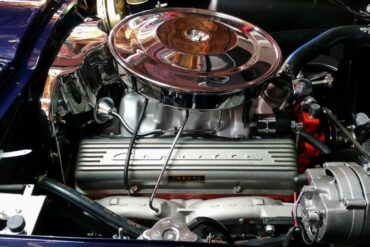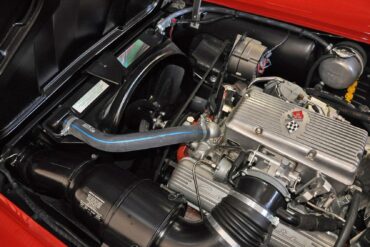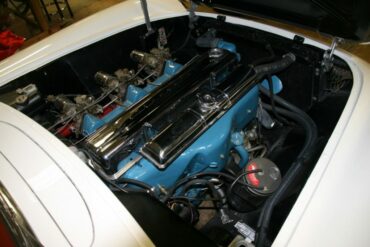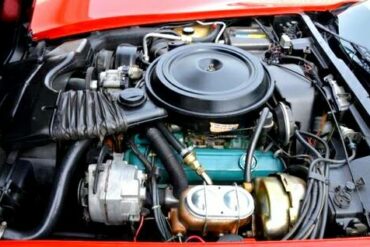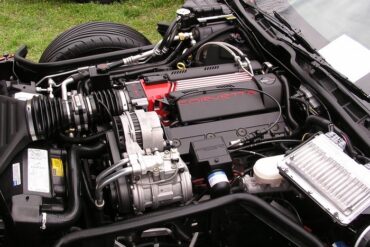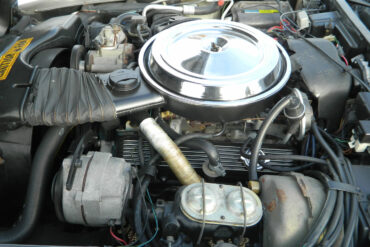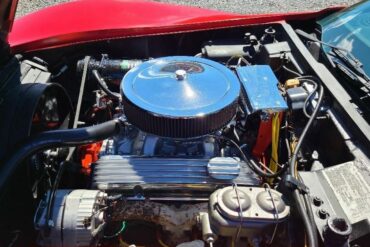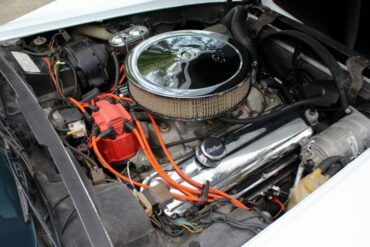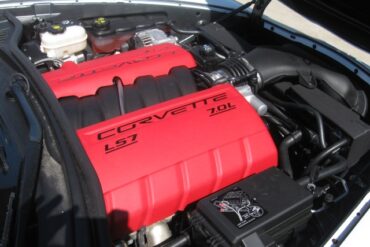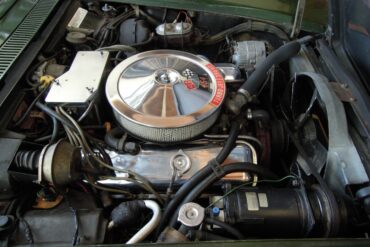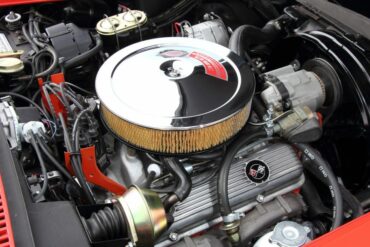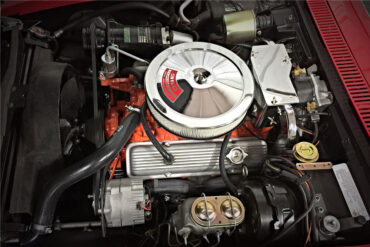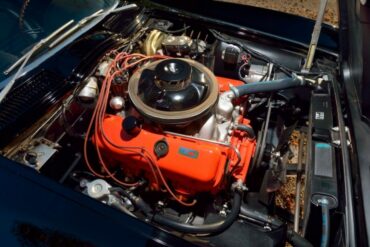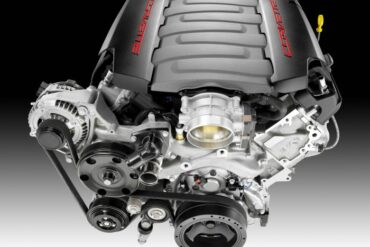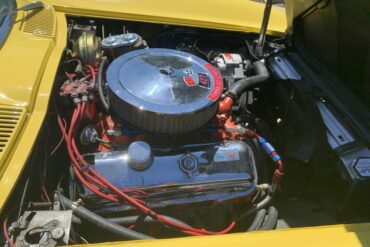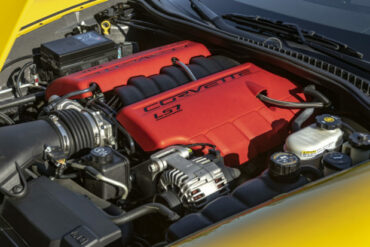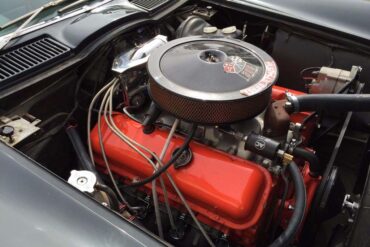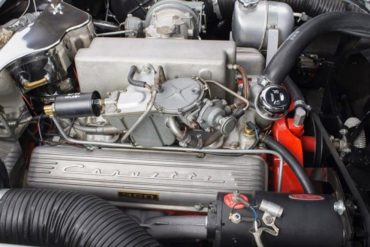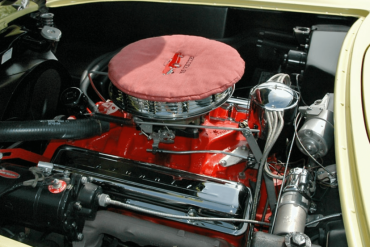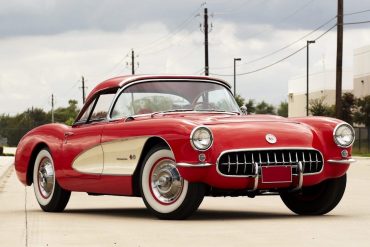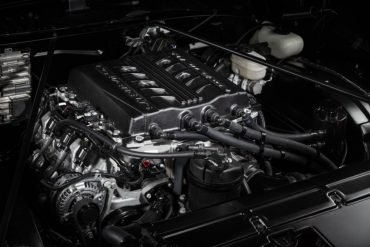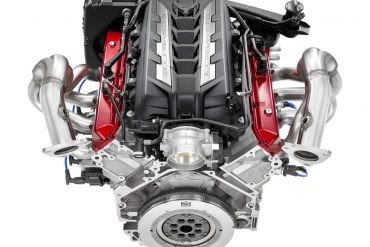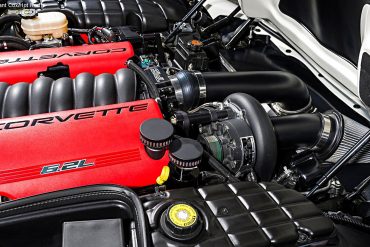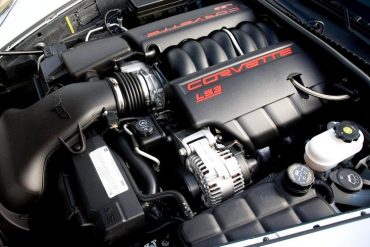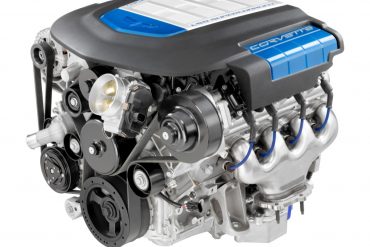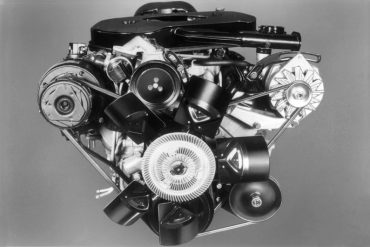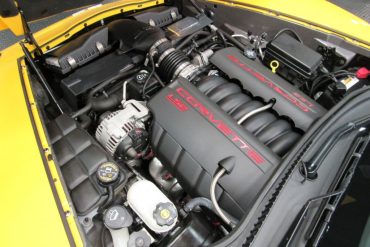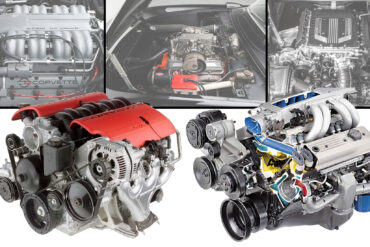The 327CI small-block V8 was available to consumers in several distinct configurations, all of which produced varying degrees of output. Available in both carbureted and fuel injected forms, the 327CI small-block proved capable of producing anywhere from 250-360 horsepower, depending upon one’s choice of engine code.
First, this engine is the most powerful naturally aspirated, internal combustion engine (by a good margin) of any production Chevrolet small-block ever produced. Boasting a massive 670 horsepower, the LT6 trumps almost all its Corvette predecessors (save for the 2019 Corvette ZR1 engine, which boasted 755 horsepower, but needed a supercharger).
The 265 cubic-inch small-block served as the jumping-off point for further engine development. Chevrolet spent the following decade perfecting their earlier small-block, which eventually grew in displacement and became a testbed for early fuel injection technology. Further progress was made in 1964, with the release of the L76 V8. This potent small block proved quite reliable while dishing out more than enough horsepower.
In under a decade, GM’s small-block received a substantial boost in displacement while also becoming the standard-bearer for several new internal developments in engine technology. These developments ultimately produced a new crop of small-block powerplants based on Chevrolet’s new 327 cubic-inch engine platform. Of the four 327 cubic-inch small blocks available in 1964, none topped the output of the fuel-injected L84 V8.
Often referred to as the “The Blue-Flame”, the Stovebolt-Six’s performance characteristics were anything but “fiery”. The Corvette, in its earliest form, was often ridiculed for being underpowered. Nonetheless, the Blue-Flame Stovebolt-Six served as the Genesis of Corvette power, if only for a brief period of time.
GM found itself facing a critical question of sorts. Should the industry giant forgo the sale of Corvettes in California during 1980 or attempt to rectify a troubling situation. In the end, buyers in California would be able to purchase a Corvette, albeit with a variation of the same engine that was offered in Chevrolet’s passenger cars of that era, the 305 cubic-inch V8.
GM ultimately decided to postpone the release of their fifth-gen Corvette, largely due to budgetary constraints. However, the development of a new powerplant for the aging C4 Corvette was greenlighted nonetheless. This engine carried the LT1 designation, and prove quite capable. The 1992 LT1 would serve as a bridge between GM small-block development.
During many production years, consumers were provided with multiple engine options to choose from. This was especially true during the late 1960s. However, by the late 1970s, GM had begun to significantly scale back the number of production engines offered for the Corvette. This trend peaked in 1981, when only one engine, known as the L81, was offered to buyers.
Finally, in 1973, consumers were left with only three available engine options, two of which were of a small-blocks. The third was the 454 cubic-inch LS4, would only survive for two years, serving as the final big-block to grace the Corvette’s engine bay. By 1975, the Corvette was only offered with one of two engines, of which, the 350 cubic-inch L82 was the most formidable.
Was the 454 cubic-inch LS4 one of General Motors’ most powerful big-blocks? Absolutely not. However, it is historically significant nonetheless. The LS4 served as the end of the road for the big-block Corvette, as America’s sports car returned to its small-block roots. Today, many collectors seek out LS4 equipped Corvettes.
In 2013, a revelation of sorts took place within the Corvette world. General Motors unveiled a “best of both worlds'' type offering, which paired the C6 Corvette, in its convertible form, with an indisputably fearsome powerplant. Beneath the Corvette’s hood, sat a 427 cubic-inch small-block, which carried the LS7 designation.
General Motors sought out any means of retaining the Corvette’s performance acuity. This desire ultimately gave rise to the company's illustrious LS5 454 cubic-inch big-block. The 454ci LS5 is remembered as one of the final GM big-block offerings to have come out in the 60’s and 70’s.
The LT-1 served as a revised version of GM’s famed 350 cubic-inch platform, and is often heralded as one of the manufacturer’s most beloved small-block powerplants. Though quite legendary in status, the LT-1 was rather obscure and short-lived during its production run, only produced for three years (1970-1972).
The 350ci V8 was actually a further extension of GM’s decade-old small-block engine series. In a bid to further cement the Corvette’s performance legacy, subsequent modifications to these earlier engines were made, thereby giving birth to one illustrious platform. It would serve as a mainstay of the Corvette line for over three decades to come.
No list of formidable Corvette engines would be complete without including the 1967 L88. The L88 was a fire-breathing variant of GM’s 427 cubic-inch big-block lineup, which served as nothing short of a production race engine. Officially rated at 430 HP, the L88 was capable of propelling its C2 host to previously unattainable performance status. The L88 was nothing, if not a loosely veiled production race engine.
It seems as if many of the engine-related advancements found in standard General Motors’ vehicles, first came to prominence when implemented in Corvette production, a decade or more prior. One such engine, which could easily be considered revolutionary, is the 2014 6.2-liter LT1. This fearsome powerplant was as sophisticated as it was powerful.
Upon its 1953 release, America’s sports car mustered only 150 HP, yet in 1966, the newly evolved Corvette nearly tripled this level of output. It was in 1966 that the Corvette was offered with not one, but two different variants of the robust 427 cubic-inch (7.0L) V8. In its most potent form (L72), the 427 officially produced 425 HP. However, most believe this value to be grossly understated.
In the midst of the Z06’s development, engineers knew that something truly remarkable would be needed to best the base Corvette’s 400 horsepower LS2. In its production form, this new small-block V8 came to be known as the LS7. The LS7 was nothing short of all-powerful, featuring a displacement of 427 cubic inches and an output of 505 horsepower.
For more than a decade after the Corvette's initial release it had small-block power. In fact, the 265 cubic-inch V8’s 1955 introduction was largely responsible for the Corvette’s validation as a sporty, performance-minded vehicle. However, by the mid-1960s, those behind the scenes at Chevrolet had begun developing a new powerplant. This engine would become the first big-block V8 to be used in Corvette production.
As efforts turned toward bringing the C2 Corvette to market, GM’s engineering staff envisioned a larger, more robust addition to their already popular Turbo-Fire V8 lineup. This engine would make its debut under the hood of the 1962 Corvette, further bolstering the line’s power and performance-related attributes.
Following only two years of production, the Corvette's future appeared bleak, as talk began to circulate about discontinuing the line in its entirety. However, the well-timed advent of Chevrolet’s newest powerplant would soon rescue the Corvette from almost certain demise.
Though the 283 cubic-inch V8 seldom receives its share of attention in a world dominated by LS and LT series engines, this early Chevrolet small-block was ahead of its time. The 283ci showcased a plethora of new and innovative tech, and highlighted the engineering prowess of legendary Corvette luminary, Zora-Arkus Duntov.
At the heart of the ZR1 Corvette resides the supercharged 6.2L LT5. GM’s engineering department was also tasked with producing the ZR1’s engine, which would have to perform at a higher level than that of the Z06’s supercharged LT4 small-block. The 755 HP supercharged LT5 would elevate the Corvette’s performance to a level never before achieved.
With the C8’s transition to a mid-engine format already greenlighted, GM’s engineering department got down to the business of coming up with an equally groundbreaking engine to power the Corvette’s incoming eighth iteration. The LT2, in its current state, is nothing short of immensely powerful, with 495 HP at 6450 RPM, and 470 lb-ft of torque at 5150 RPM.
The LS6, which served as the motivating force behind the 2001-2004 Corvette Z06, bested the prior LS1 in virtually every facet of performance and proved formidable, both on the track and street. Perhaps more importantly, this engine provided a glimpse into the LS platform’s future, and its ability to constantly evolve.
Upon the LS3’s release in 2007, this trend toward continual technological advancement was clearly evident. As the new power plant for the standard 2008 Corvette, the LS3 provided consumers with exactly what they had been craving, unsurpassed performance. With every reiteration, the LS small-block has become more powerful, efficient, and robust.
Most would agree that the Corvette’s no holds barred approach to performance excellence is high up on the list of...
Offered for only two years (1982, 1984), the L83 featured GM’s newly designed Cross-Fire Fuel Injection system and is often referred to by critics as being one of the most unworthy engines to ever find its way under the Corvette’s hood. However, this begs the question of whether or not the L83 was truly deserving of this mockery.
Throughout the years, there have been a number of legendary powerplants to call the Corvette’s engine bay home. Of these,...
The Best Engines Chevy Has Dared to Stuff Under the Hood of a Corvette Over the Decades Behind every iconic...


